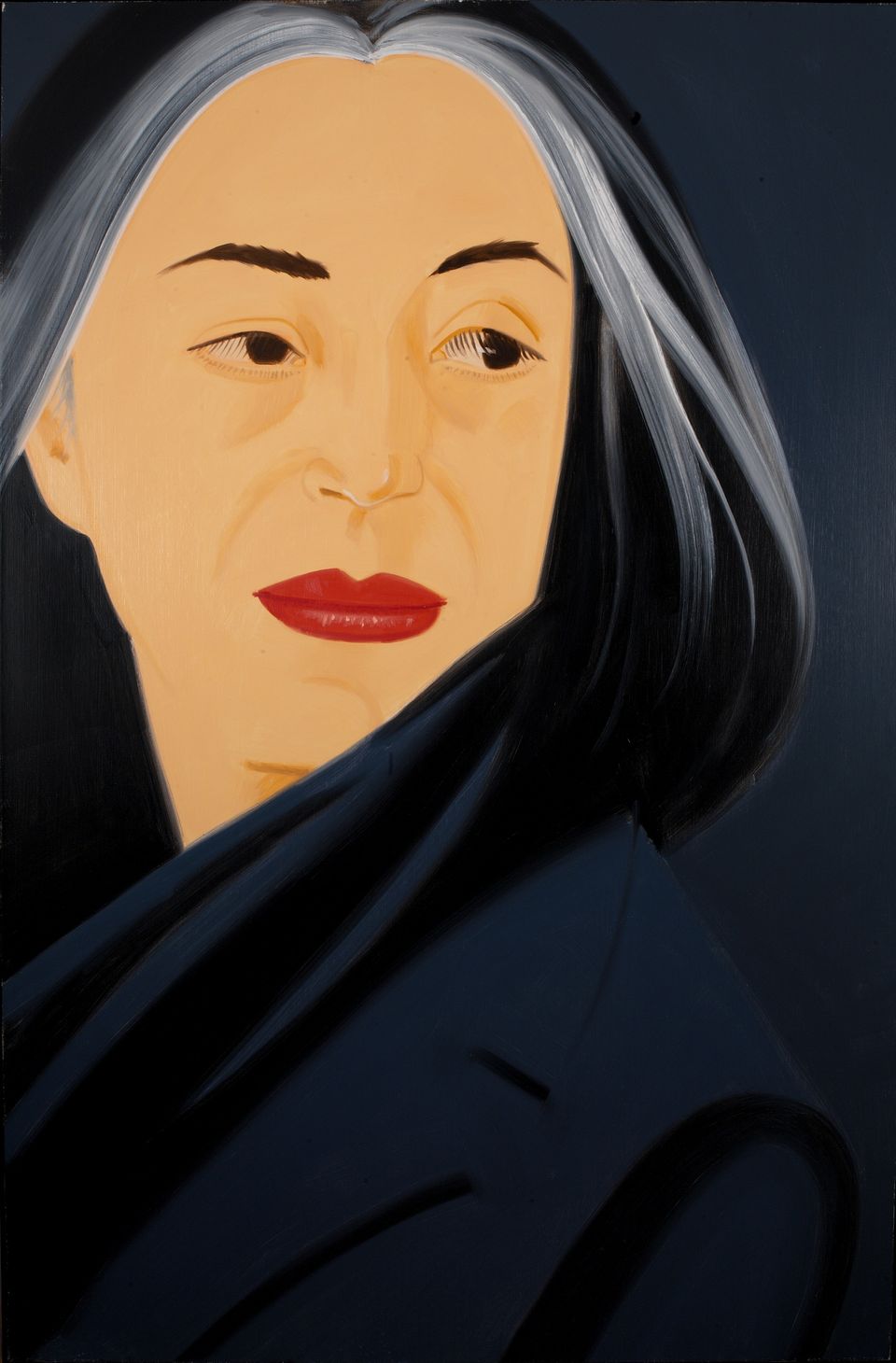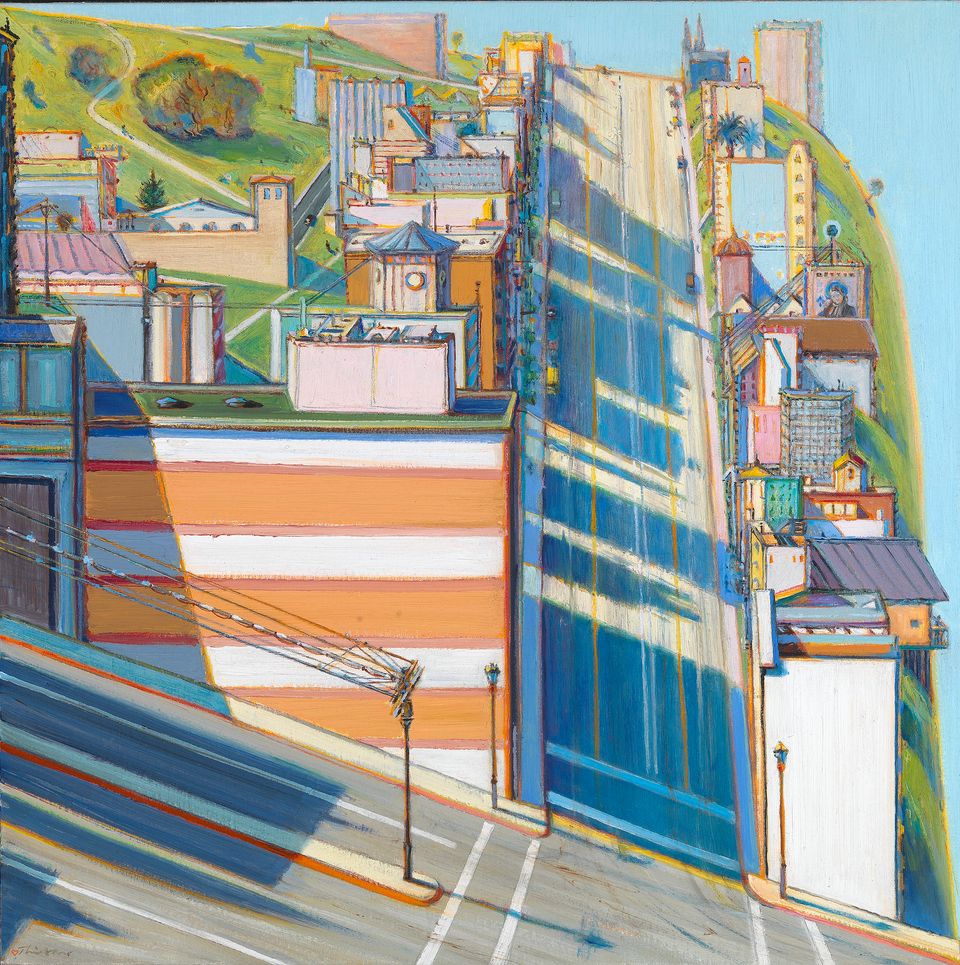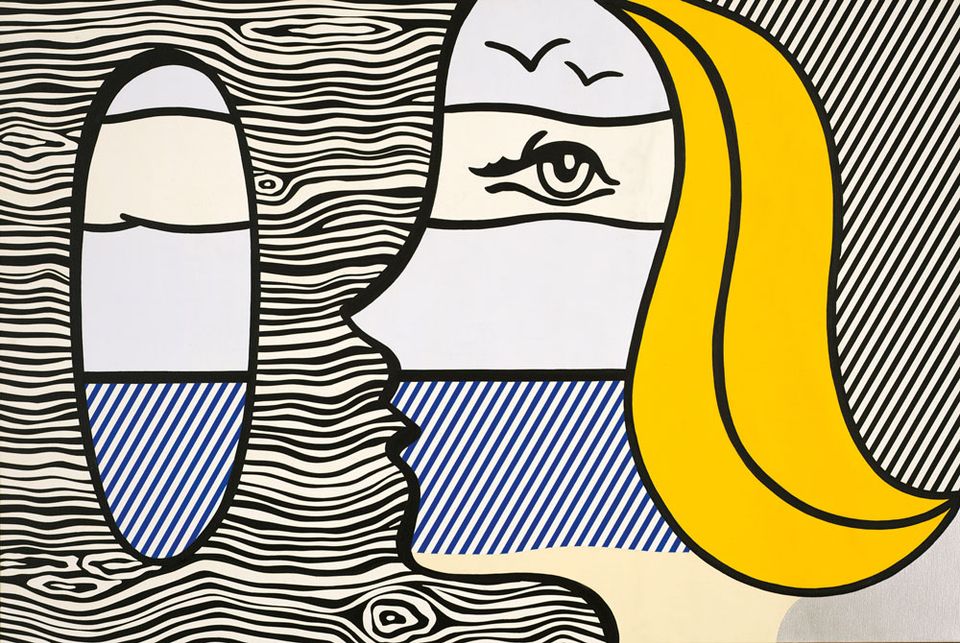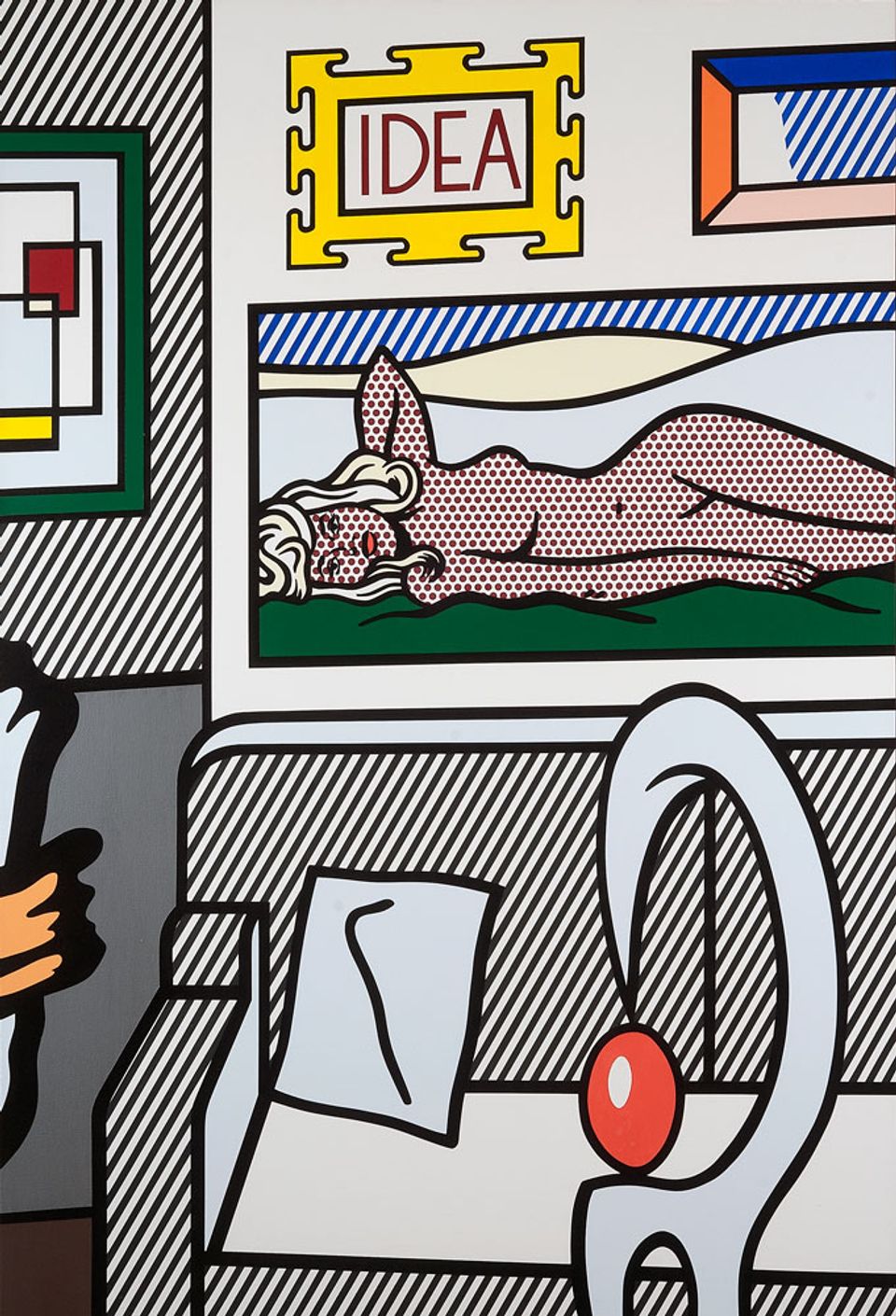
Black Scarf, Alex Katz, 1995, oil on canvas, 72 x 48 in., Smithsonian American Art Museum, Partial and promised gift of Sam Rose and Julie Walters. Art © 1995, Alex Katz/Licensed by VAGA, New York, NY
The woman in Black Scarf has been described as both goddess and sphinx. She is Ada, Alex Katz’s wife and muse of more than sixty years. Looking over her shoulder, with her left eyebrow raised, she responds to something beyond the frame. Katz offers no clues to her thoughts or to her identity, yet her presence commands the surrounding space.

Wayne Thiebaud, San Francisco West Side Ridge, 2001, oil on canvas, Smithsonian American Art Museum, Gift of Sam Rose and Julie Walters, 2004.30.5
San Francisco West Side Ridge is a riot of rectangles, horizontals, and diagonals that thrust downward and obliquely to destabilize streets and urban buildings. Parked vehicles seem pinned to vertical curbs; turrets, palm trees, and a tiny figure on a balcony confirm life at the top of the precipice; shadows cast by street lamps point like arrows to the dramatic drop-off at the right.

Landscape, Roy Lichtenstein, 1977, oil and Magna on canvas, 40 x 60 in., © Estate of Roy Lichtenstein
Wit, parody, double takes—these are the tools of Lichtenstein’s trade. He stops us in our tracks and plays tricks with our sense of sight. At first glance Landscape is a picture of a stylized woman looking in a mirror. But a second look reveals that the mirror is a porthole through which we see a blue sky and a cloud that also transect the woman’s face. Diagonal lines represent ocean, and a wood grain wall complete with knotholes designates the interior of a stateroom. Lichtenstein starts out making us laugh, then he makes us think—about what we are actually seeing and how we process images.

Idea, Roy Lichtenstein, 1993, oil and Magna on canvas, 90 x 61 in., © Estate of Roy Lichtenstein
In Idea, Lichtenstein incorporated subjects and notations he used throughout his career. At the left, cropped almost beyond recognition, is one of his brushstroke sculptures. A canvas on the wall is a play on the geometric paintings of Dutch modernist Piet Mondrian, and a picture of a nude reclining in a landscape echoes a motif explored by painters since the Renaissance. The benday dots and black outlines familiar from commercial illustrations intermingle with this trail of art. Above is a “picture” of the word idea framed in glittering gold. More than an image of the world or an abstract arrangement of line and color, for Lichtenstein, art is fundamentally an idea.













